Name : Parveen Akhtar
Course – PERFORMANCE AND PRODUCTION ARTS – MMU Pathway
Level – 2/3
Project 9 – Final Major Project
Deadline: Practical- On line Submission – 19/05/23
Pitch and Proposal – 29/3/23
Solo Verbal Evaluation – 19/05/23
Practical – Part 1 – Deadline – 30/03/23
Practical – Part 2 – Deadline – 27/04/23
Practical – Part 3 Deadline – 17/05/23 and 18/05/23
Online Submission : 23 May 2023
Content Page
– Introduction (link page to project-5)
Part 1 – Stimulus Expressions,
Part 2 – Insta Glam
Part 3 – Musical Theatre
Inspirations
– Proposal (project 5 – link page)
– Content
– Research (information/pictures on introduction page and scrapbook)
– How I have used my research (Youtube/Google, pictures, magazines, Instagram)
– Mood-boards (to create my chosen looks)
– Rehearsal Pictures (Practice, Demos)
– Risk assessment (skin test)
– Textured Hair (Scrapbook page)
Context
1- Budget information (Link page to project -5)
2 – Design Ideas (Mood-boards)
3 – Look ideas and design (research on Youtube, Instagram demos, Magazines, Movies)
4 – Marketing Ideas and Designs ( Mood boards )
5 – Feedback – (from obs and peer obs/ direction/ verbal/ tutors, actors and )
6 – My Reflections (weekly updates)
7 – Evaluation (on over all project look)
8 – Aviva
9 – Reference list/ biography and links on introduction page/on other pages
10- Practice with peers and actors (Reflections page)
Problems with Digital Space uploading / solving the problem
I have had the problem on every project to upload my course related information on to the main page, so I decided to create main page and another page as link main page so it is not seen as the first page, but unfortunately after small amount of work uploaded, It has coursed the same issue, it allows to upload stuff but after so much work is uploaded it refused to update to save the work.
therefore I am uploading some of the main page work on to Scrapbook page, I hope this will not create the same issue later on.
Proposal and Pitch
Health and safety
The health and safety for these looks include,
- Keeping station and equipment sanitised and tidy
- Wearing a mask if necessary to stop spread germs
- Sanitize hands
- Clean products in between models
- for heat appliances use heat protection mats and products
- Do Skin/patch test for any products that could course reaction/irritation
Mood board of my Stimulus Expression Word Health/drugs addiction
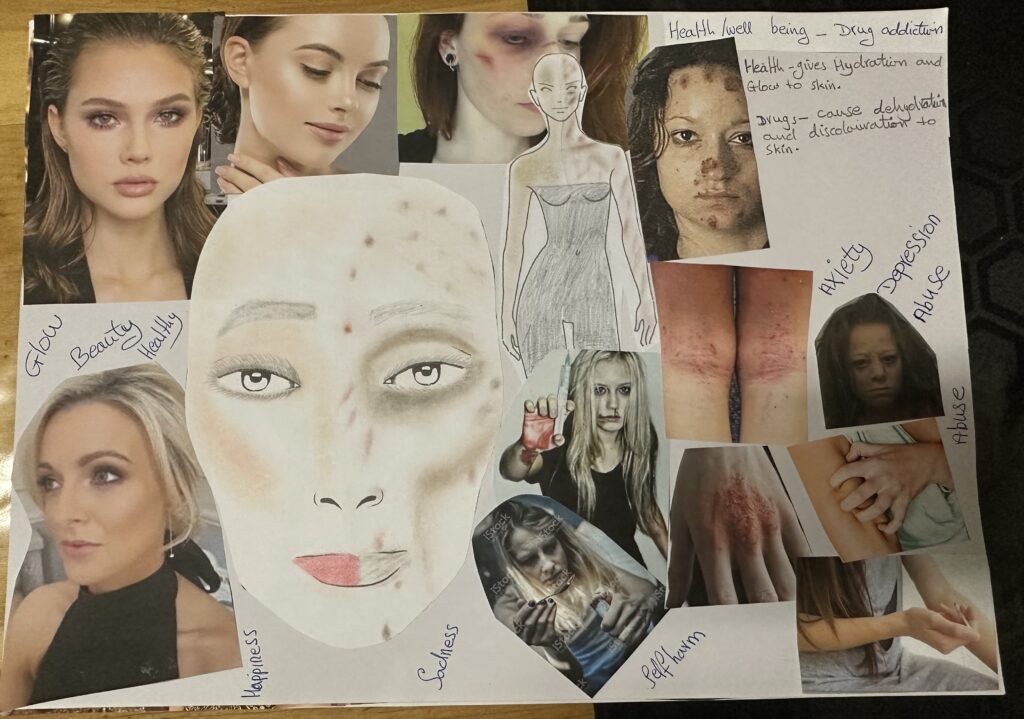
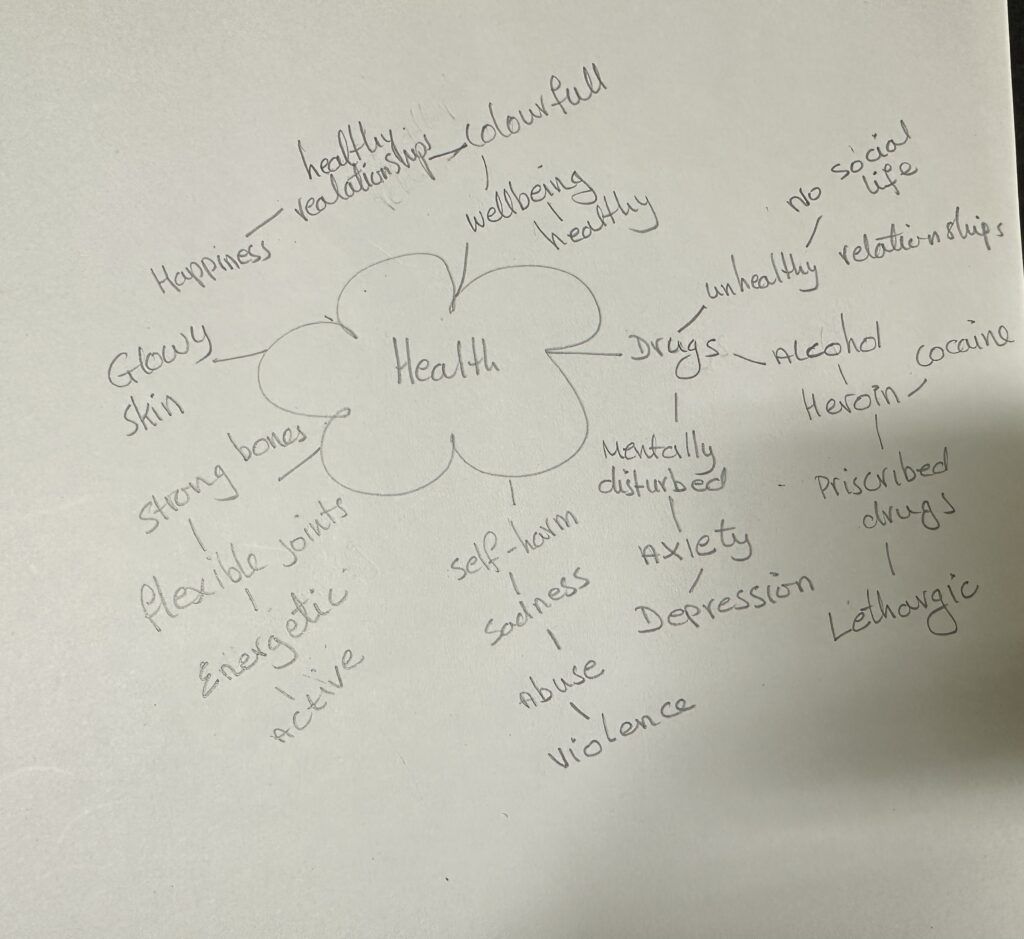
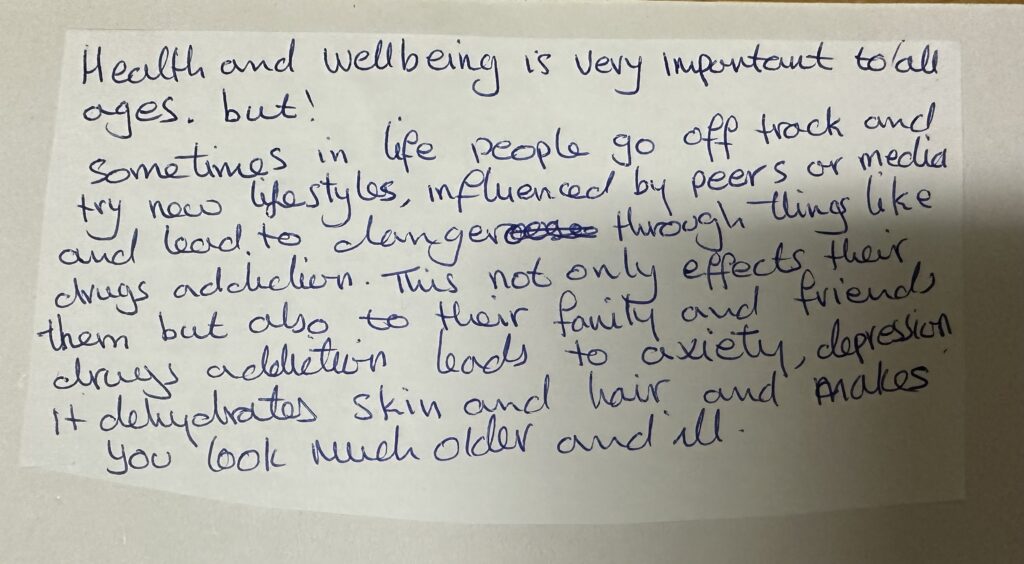
Stimulus Expression
The target audience will be all ages.
The first look is Stimulus Expression -is representing the theme of The word I have been given ‘Health’ after searching healthy and well being and unhealthy effect. My inspiration for this is health and drug addiction, My look will contain half side and healthy and clean hydrated skin, and other half dull, tired unwell skin with marks of acne and scar damaged skin, which carries on to the neck and shoulders, which I have designed Half side on health and half apposite (unhealthy) Drug addiction look. Showing healthy and well being and the affects of drugs over usage/abuse on a persons health and appearance.
Well being gives glow to the skin – according to the word of health Organization is a state of complete physical, mental and social well being and not merely the absence of disease and infirmity.
how Drug addiction affect health and well being?
People with drug addict often have one or more associated with health issues which include anxiety and depression.
Healthy person has happy lifestyle and glow on skin shiny hair, and addicted person has rough appearance, unhappy and dull/dry skin and hair. There for health is very important for all ages. I like to work on someone in middle age, as I have not yet worked on anyone in this age range.
I have broken down all the products I will be using on this look.
Budget – Stimulus Expansion- Health/Drugs
Simple Cleanser £7.00
Simple Toner. £7.00
Simple Moisturiser. £5.50
Primer. £5.50
Setting Spray. £6.50
Foundation. £7.50
Grease paint £25.00
Setting powder. £5.50
Loose Powder. £3.50
Contouring powder. £4.50
Blush. £4.00
Highlighter. £3.50
Eye shadow pellet. £19.99
White Liquid eyeliner. £2.99
Mascara black. £5.50
False Eyelashes. £6.00
Lipstick. £3.50
krylon mix contour kit. £25.00
Hair spray. £5.99
Hair Mousse. £6.00
Serum (for shine). £5.99
Hair pins. (Box) £7.00
Total: £185.97
Moodboard of Instal Glam- Asian Bridal
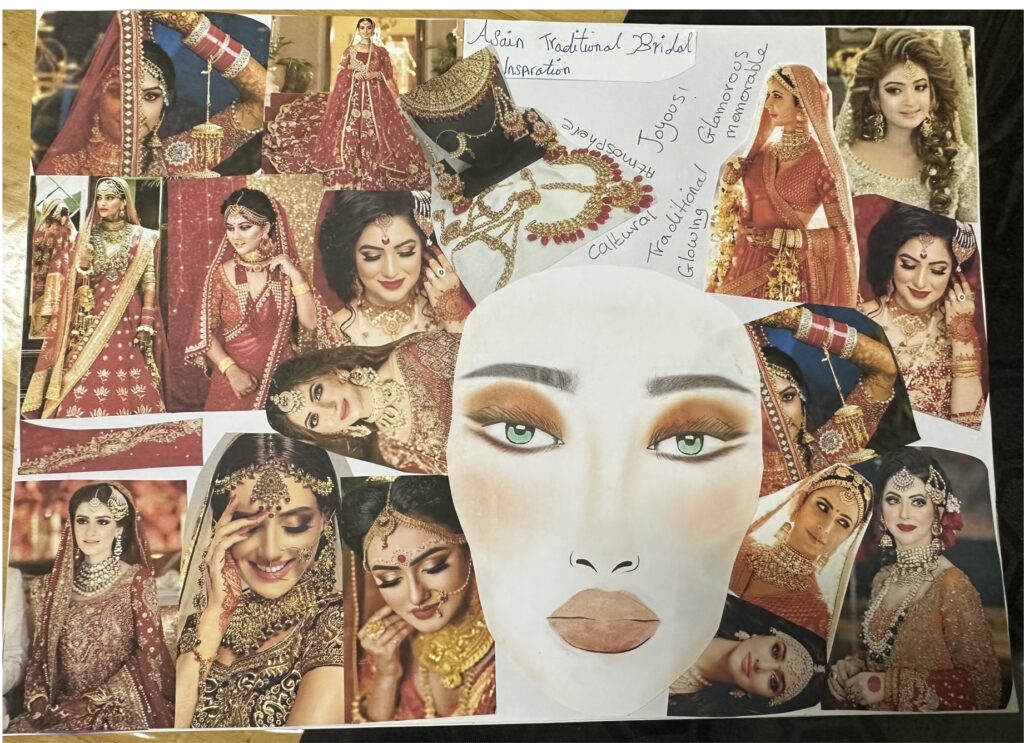
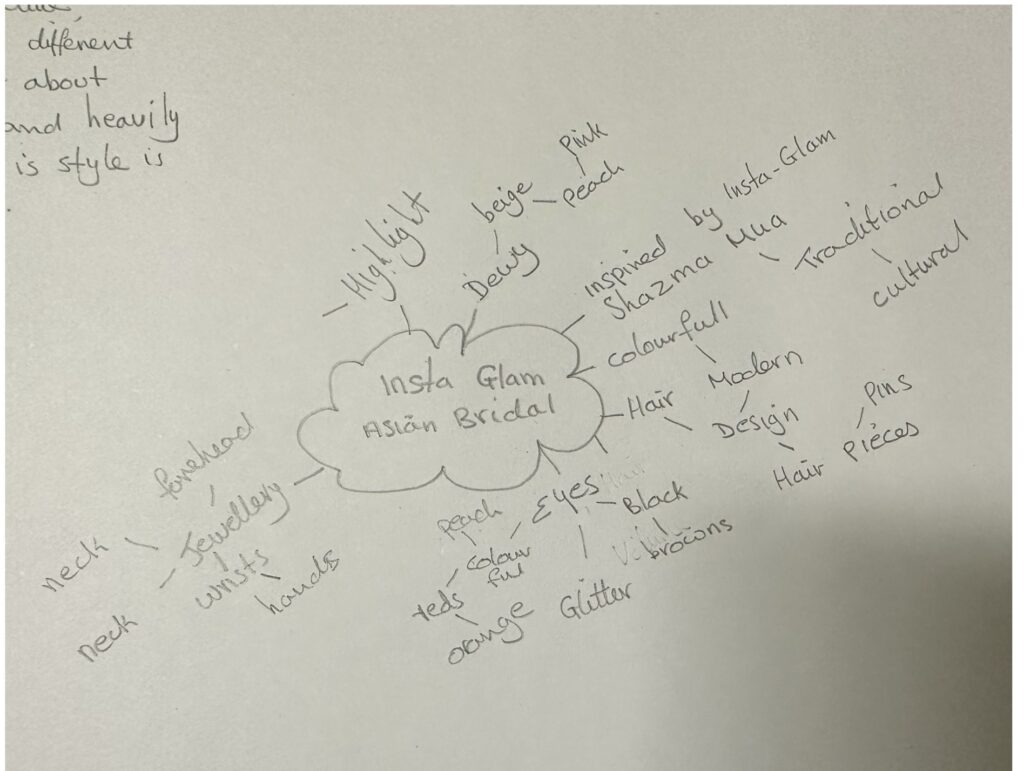
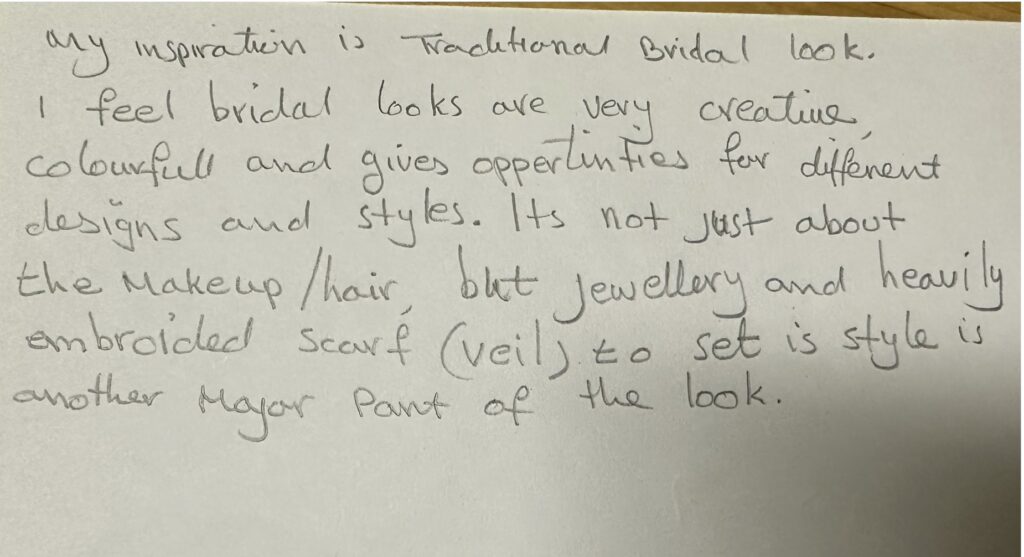
Second look I have created is Insta Glam – I have looked at many bridal looks and Traditional Asian Bridal look has inspired me the most. For this look I would like to work on the dark skin, as they need darker base and lighter colours for the eyes and lips. My target audience are younger to middle age who like traditional look.
My concept for this look is to create softer Smokey eye makeup with heavy eye lashes, I like to keep the look natural, will use softer blush and like to use brighter highlight to the high points of the face to pop for the pictures, will be using nude lip colour, the eyes are the main focus on this look, and the hair, I want to create back comb puff/ bun and curls possibly adding hair piece to the hair style, set the jewellery and scarf which the scarf covers head and down over the shoulders and pined up at the back on heavy embroided dress.
I have listed the products I will be using to create this look.
Budget
Products – for Insta-Glam Bridal makeup
Simple Cleanser £7.00
Simple Toner. £7.00
Simple Moisturiser. £5.50
Primer. £5.50
Setting Spray. £6.50
Foundation. £7.50
Setting powder. £5.50
Loose Powder. £3.50
Contouring powder. £4.50
Blush. £4.00
Highlighter. £3.50
Eye shadow pellet. £19.99
White Liquid eyeliner. £2.99
Mascara black. £5.50
False Eyelashes. £6.00
Lipstick. £3.50
Total: £113.99
Jewellery set £60.00
Embroidered Scarf. £45.00
Hair extensions/fillers. £30.00
Hair spray. £5.99
Hair Mousse. £6.00
Serum (for shine). £5.99
Hair pins. (Box) £7.00
Artificial bun. £1.50
Total. £161.48
All. £275.47
Mood-board of Musical Theatre – Rapunzel
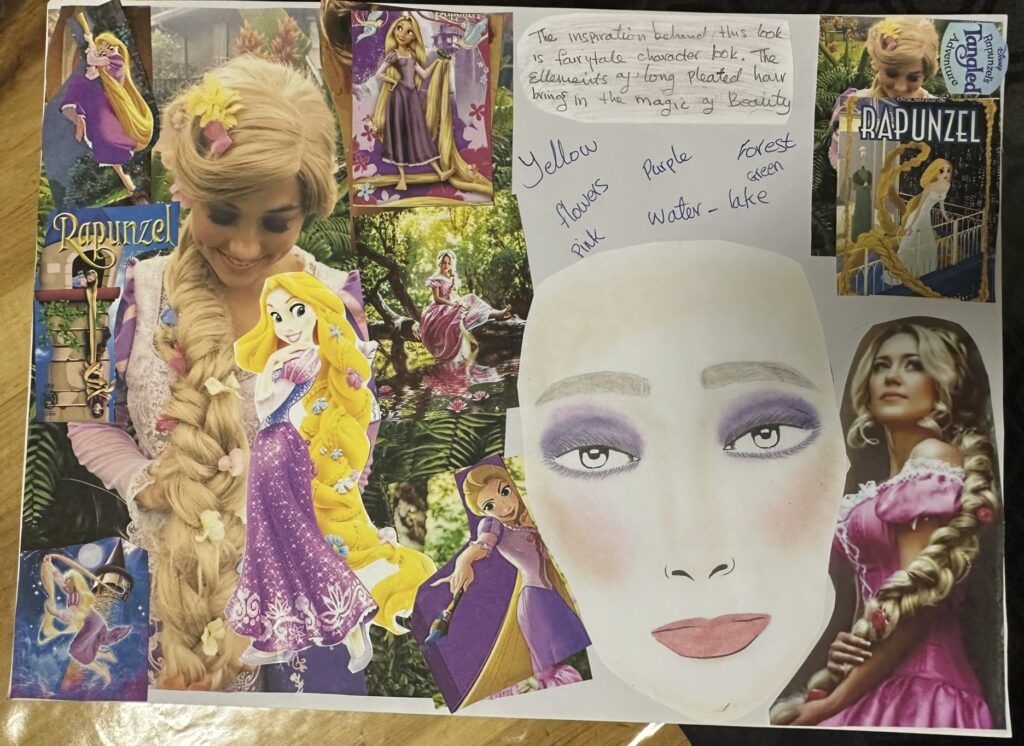
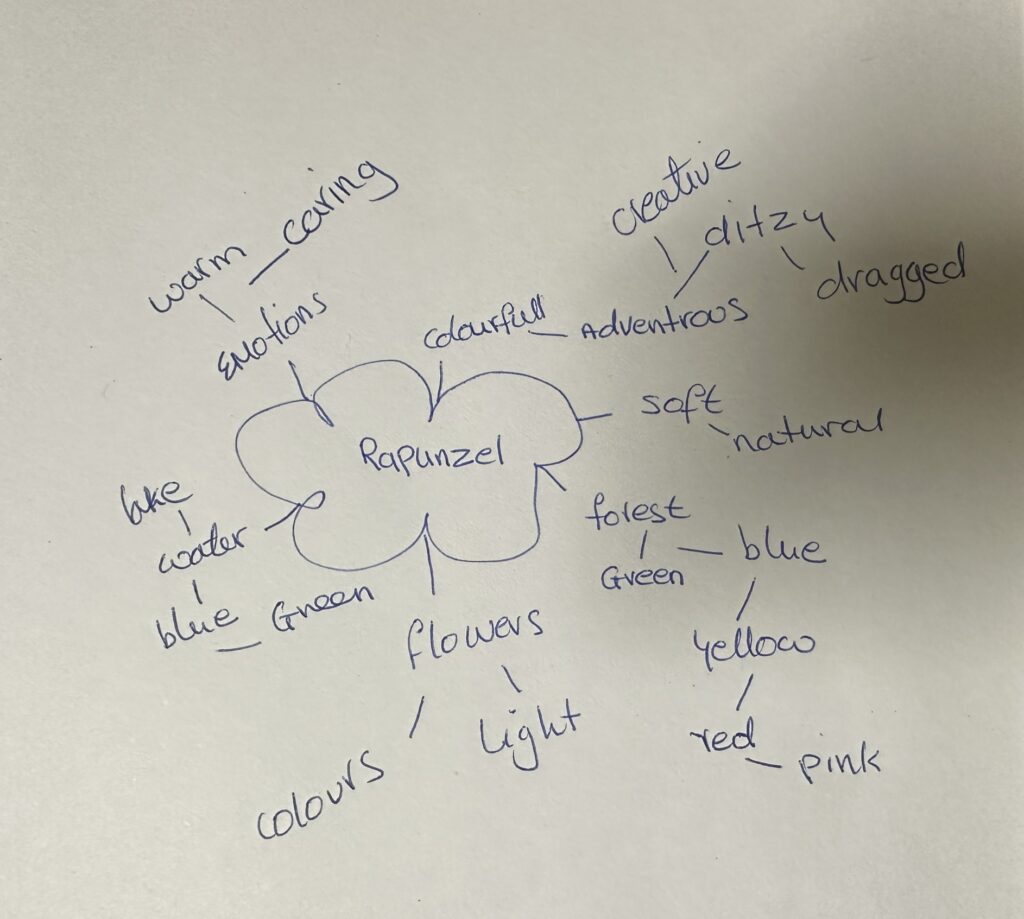
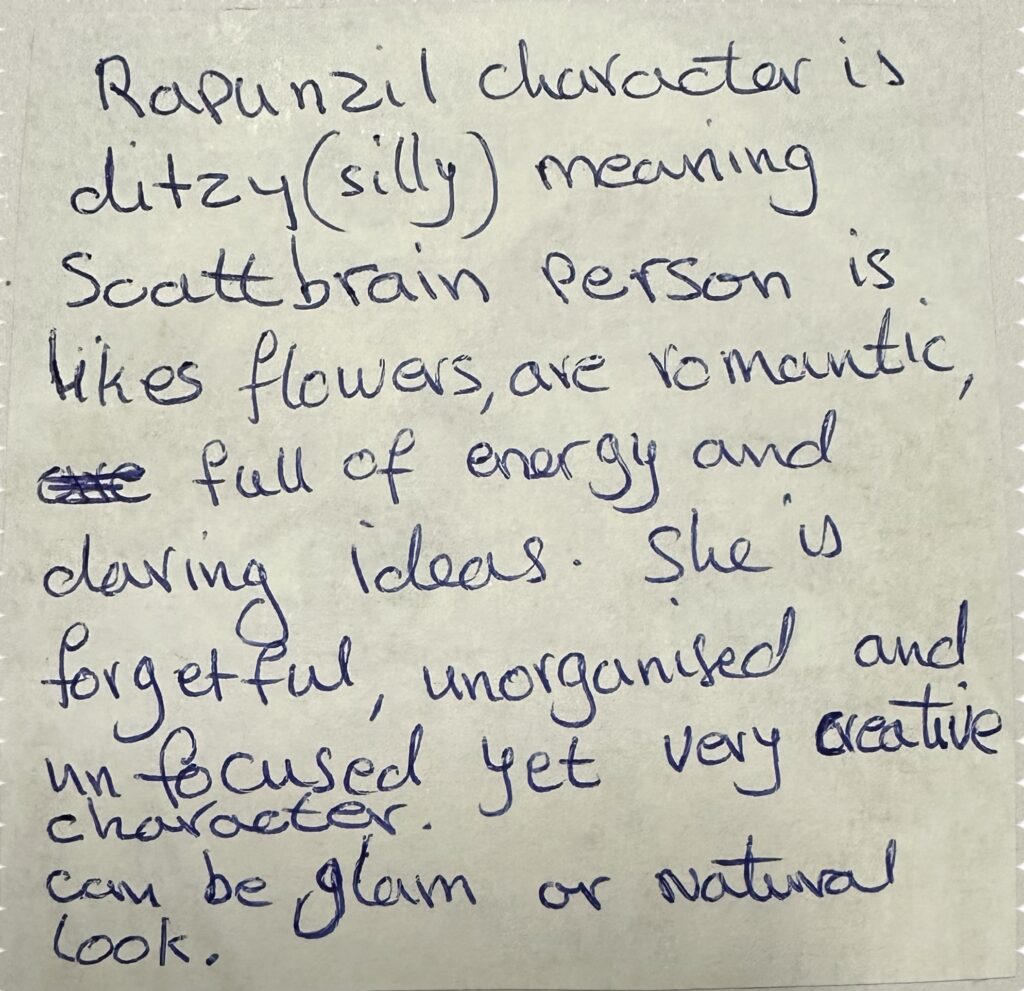
The third look is – Musical Theatre – and the character I have chosen is ‘Rapunzel’ who is spirited and determinate young woman, with a strong sense of curiosity about the world. the character is ditzy (silly or scatter-brained) un organised, but she is colourful and creative, full of energy and wanting to explore. (The second character I have chosen is the ‘SNOW WHITE’ – which is also kind of character for similor kind of target audience)
My design concept for this look is purple and pink colours in makeup shades, I like to create c shape eye shadow with little darker on outer eyes and lighter on inner corner to create wider eye look, I like to add highlighter to the cheeks and inner corner on the eyes and make it look more colouful with back comb hair for the volume in to pony and add extension for the length of the hair.
The target audience will be people who have interest in fantasy and musical theatre performances.
I have calculate the price of the products for this look I will use.
Budget – for Musical Theatre makeup
Simple Cleanser £7.00
Simple Toner. £7.00
Simple Moisturiser. £5.50
Primer. £5.50
Setting Spray. £6.50
Foundation. £7.50
Setting powder. £5.50
Loose Powder. £3.50
Contouring powder. £4.50
Blush. £4.00
Highlighter. £3.50
Eye shadow pellet. £19.99
White Liquid eyeliner. £2.99
Mascara black. £5.50
False Eyelashes. £6.00
Lipstick. £3.50
Total: £113.99
Pony extension wig. £70.00
Hair extensions/fillers. £30.00
Hair spray. £5.99
Hair Mousse. £6.00
Serum (for shine). £5.99
Hair pins. (Box) £7.00
Total. £54.98
All Total. £169.97
Snow White (Disney character)

Snow White is a fictional character and a main character from Walt Disney Productions‘ first animated feature film Snow White and the Seven Dwarfs (1937). She was originally voiced by Adriana Caselotti. The character of Snow White was derived from a fairy tale known from many countries in Europe with the best-known version being the 1812 tale collected by the Brothers Grimm.
Snow White is the first Disney Princess and the first fictional female character with a star on the Hollywood Walk of Fame.[3] Given the title the “Fairest One of All”, she has continued to inspire similar traits in future Disney heroines, such as singing and communicating with animals.
After Caselotti, she has also been voiced by Jane Powell, Ilene Woods, Dorothy Warenskjold, June Foray, Mary Kay Bergman, Carolyn Gardner, Melissa Disney, Katie Von Til, and Pamela Ribon, and portrayed live by Stephanie Bennett (Descendants). Rachel Zegler will portray a live-action version of the character in the upcoming live-action adaptation of the original 1937 film.
In the original film, Snow White is depicted with black bobbed hair, brown eyes and skin as white as snow. She wears subtle make-up and rouge. The red color of her lips and cheeks resembles the red color of the apple which sends her into a deep sleep.[33] She is not yet an adult woman, but a girl in her puberty years. Her plump face is a characteristic typically associated with good health and kindness.[33]
Snow White’s clothing is traditionally feminine, and rather prudish in covering as much skin as possible. Her main costume is a long dress, with a white collar, blue and puffy sleeves with red slashing, a yellow skirt, and a laced petticoat. She also wears a brown cape with a red interior, high-heeled shoes with a bow-like ribbon on each of them, and a red ribbon on her hair.[33]


Products used on textured Hair
What hair product to use for textured hair?
Start with a water-based leave-in conditioner, like Kinky Curly Knot, followed by a light oil like coconut or grapeseed. Finish with your cream styler of choice—I like Shea Moisture Curl Enhancing Smoothie. Working in small sections helps to ensure you saturate all strands.
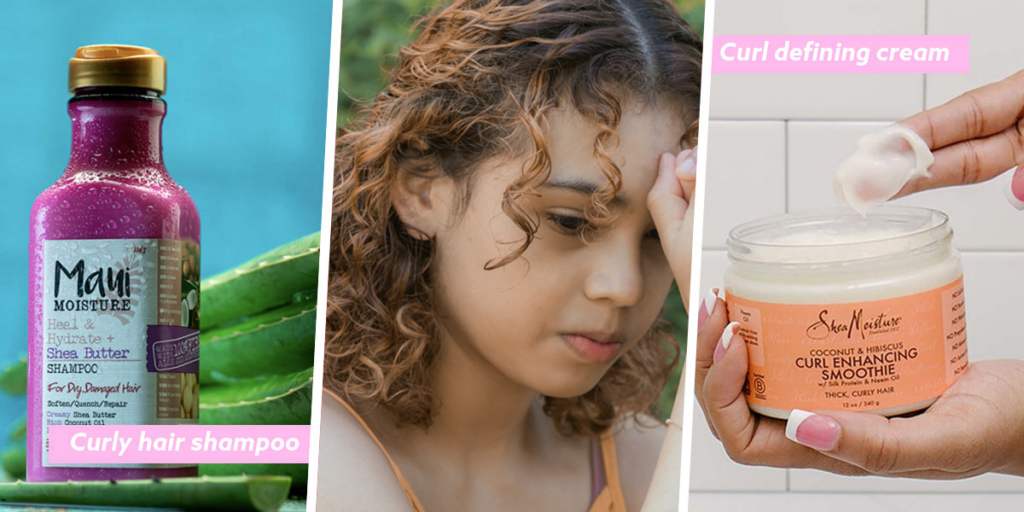
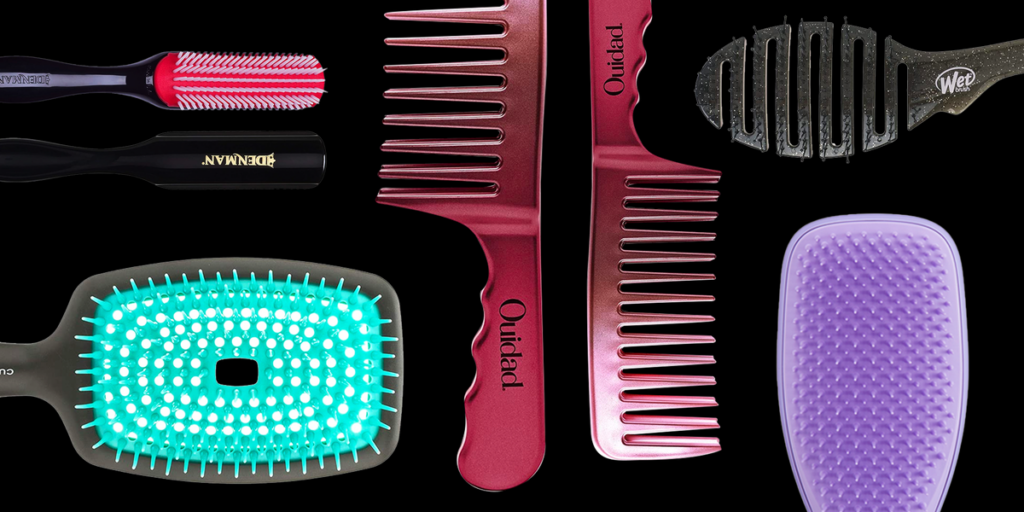


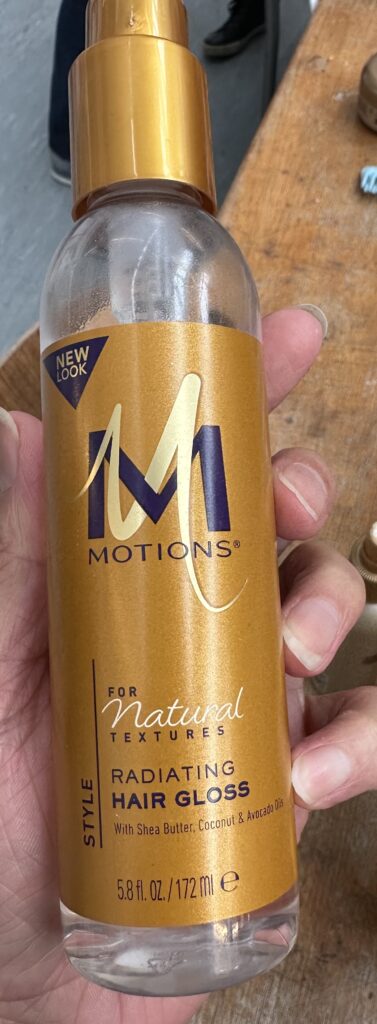

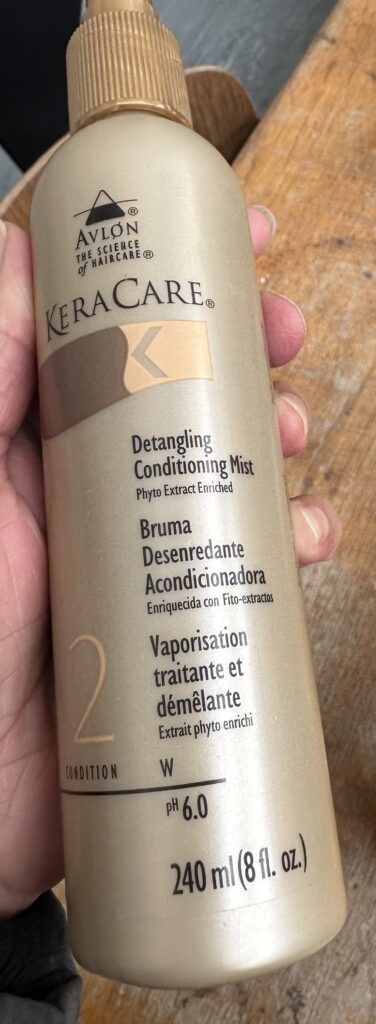
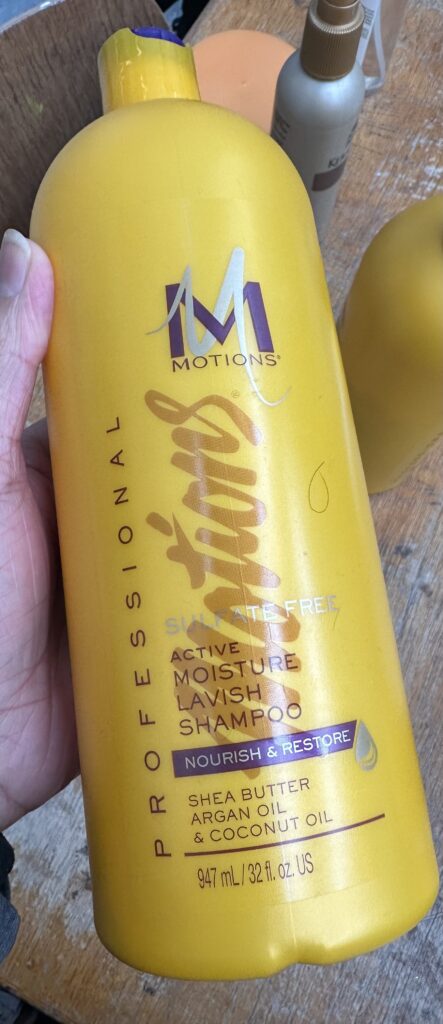
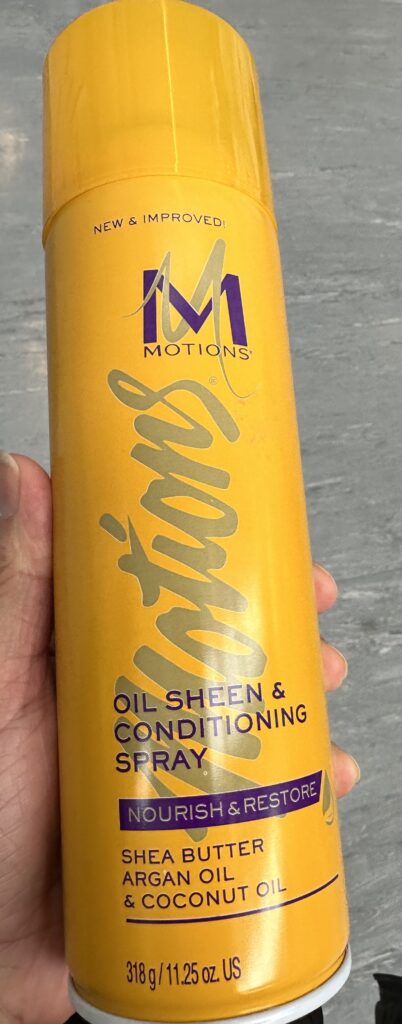
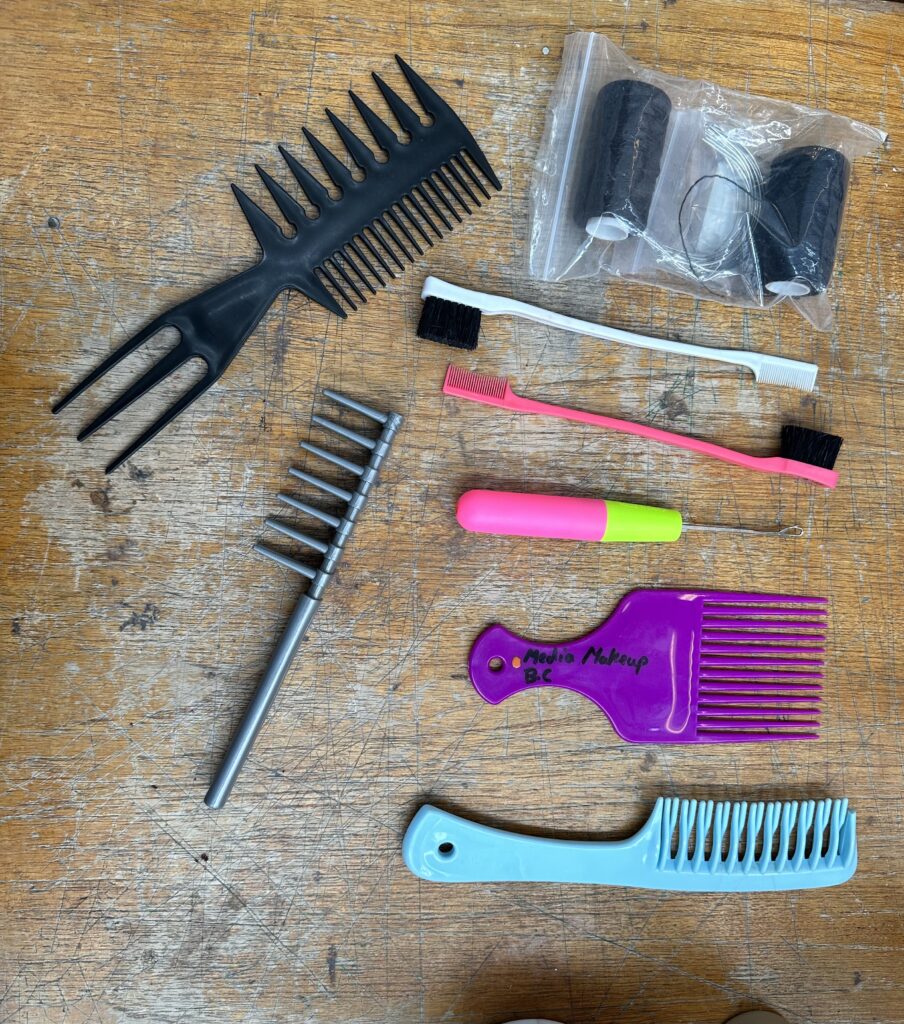

Why does curly hair need products?
Going out and about with no products at all might allow moisture to escape your ends and leave you more prone to splits. Your curls will be less moisturized. Without leave in conditioners and oils, your curls will be much more prone to dryness. Your curls might feel dry or brittle without any extra moisturizer.
The absolute best products you need to care for textured and Afro hair, according to the experts
Anyone that was born with, or has had to deal with Afro hair, knows how complex this texture of tresses is. With complexity sometimes comes frustration. Many Black women will spend the majority of their lives trying to figure out their hair. In the process of figuring it out, a lot of money will be spent. In fact, Black British women spend six times more on hair than their white counterparts, yet we only make up around 4% of the female population.
Granted Black women that are lucky enough to sport Afro hair are often more than happy and willing to invest on the creme de la creme of hair in order to keep their crown in tip top. However, the problem is that putting money on a product doesn’t necessarily mean it will be good for it.
Black British women spend six times more on hair than their white counterparts, yet we only make up around 4% of the female population.
Whether kinky, coily, wavy or straightened, naturally-textured, Afro hair has unique needs, requiring a bespoke regime to ensure optimum results and hair health. From masks that boost moisture levels, to creams that define curls, to detanglers that work on the most complex of knots, we called in the experts to recommend their all time favourite products that have been specifically formulated for textured hair.
To help define the best of the best for Afro hair, we asked an esteemed panel of hair experts for their picks, including Vernon François, global hairstylist and the visionary behind the hair of A-list clients including Lupita Nyong’o and Serena Williams. Vernon also founded his very own haircare brand, bringing red-carpet results to all. Fellow brand founder and stylist Charlotte Mensah is also here to help, sparing time from her back-to-back salon schedule to recommend her ultimate array of texture-enhancing, curl-nourishing products.
what is History of Cornrows?
Cornrows
Cornrows (sometimes called canerows) are a traditional style of braids in which the hair is braided very close to the scalp, using an underhand, upward motion to make a continuous, raised row. Cornrows are often done in simple, straight lines, as the term implies, but they can also be styled in elaborate geometric or curvilinear designs.
Depending on the region of the world, cornrows are worn by both sexes, and are, on some occasions, adorned with beads, hair cuffs, or cowrie shells. The duration of weaving cornrow braids can take may up to five hours, depending on the quantity and width.[1] Often favored for their easy maintenance, cornrows can be left in for weeks at a time if maintained through careful washing of the hair and natural oiling of the scalp. Braids are considered a protective styling on African curly hair as they allow for easy and restorative growth. Braids pulled too tightly or worn for longer lengths of time and on different hair types can cause a type of hair loss known as traction alopecia.[2]


A cornrow braid is a type of plait that is woven flat to the scalp in straight rows and has a raised appearance, resembling rows of corn or sugarcane (hence their apt name). Cornrows originate from Africa and the Caribbean and are a popular protective hairstyle for both men and women with natural hair.
History
Cornrows seen on a statue of the Small Herculaneum woman, ca. 2nd century
The oldest known depictions of hairstyles that appear to be cornrows or braids are the statues known as the Venus of Brassempouy[3][4] and the Venus of Willendorf,[5][6][7] which date to 25,000-30,000 years ago and were found in modern day France and Austria.
Depictions of women with cornrows have been found in Stone Age paintings in the Tassili Plateau of the Sahara, and have been dated as far back as 3000 B.C. As well as the cornrow style is seen in depictions of ancient Cushitic people of the horn of Africa wearing this style of braids as far back as 2000 B.C.[8] The traditional hairstyle of Roman Vestal Virgins incorporated cornrows.[9][10][11]
The tradition of female hairstyling in cornrows has remained popular throughout Africa, particularly in the Horn of Africa and West Africa and the rest of Africa as a whole. Historically, male hairstyling with cornrows can be traced as far back as the early 5th century BC within Ancient Greek sculpture and artwork, typically shown on warriors and heroes. Artwork and statues of different Middle Eastern and Mediterranean civilisations dating back to the 3rd and 4th century BC also suggest that such hairstyles were common amongst warrior cultures. More modern male depictions occur in the 19th century Ethiopia, where warriors and kings such as Tewodros II and Yohannes IV were depicted wearing cornrows.[citation needed]
The name also refers to either the corn fields or sugar cane fields in the Caribbean.[12] It is most commonly held that this idea originated from Benkos Biohó during his time as a slave in Colombia.[citation needed]
Téwodros II wearing cornrows
Cornrow hairstyles in Africa also cover a wide social terrain: religion, kinship, status, age, racial diversity, and other attributes of identity can all be expressed in hairstyle. Just as important is the act of braiding, which passes on cultural values between generations, expresses bonds between friends, and establishes the role of professional practitioner.[13]
Cornrows have made a comeback in the United States in the 1960s and 1970s, and returned again during the 1990s and 2000s. In the 2000s, some athletes wore cornrows, including NBA basketball players Allen Iverson, Rasheed Wallace, and Latrell Sprewell.[14] Many female mixed martial artists who have more than jaw-length hair choose to wear cornrows for their fights as it prevents their hair from obscuring their vision as they move.[citation needed]
Controversy
A Nuba woman wearing cornrows in a traditional styling
Over the decades, cornrows, alongside dreadlocks, have been the subject of several disputes in U.S. workplaces, as well as universities. Some employers and educational institutions[15] have considered them unsuitable and banned them.[14] Employees and civil rights groups have countered that such attitudes evidence cultural bias, and some disputes have resulted in litigation.[16]
In 2011, the High Court of the United Kingdom, in a decision reported as a test case, ruled against a school’s decision to refuse entry to a student with cornrows. The school claimed this was part of its policy mandating “short back and sides” haircuts, and banning styles that might be worn as indicators of gang membership. However, the court ruled that the student was expressing a tradition and that such policies, while possibly justifiable in certain cases (e.g. skinhead gangs), had to accommodate reasonable racial diversities and cultural practices.[17]
In the US state of California, the CROWN Act was passed in 2019 to prohibit discrimination based on hair style and hair texture.[18]
The True Origin Behind the History of

by 21Ninety 25 February 2021
Cornrows are a cool and simple protective hairstyle that can last for days or even weeks. There are numerous ways to style cornrows, and it looks good on both men and women. But do you know the history of this hairstyle? According to author Toni Love, cornrows go back at least 3000 years for women and for men; it goes back to the 19th century throughout parts of Africa. Cornrows became popular in the 1960s and 1970s thanks to an interest in embracing Black pride and natural hairstyles. Here is more information about the history of cornrows.
The appearance of Black women with cornrows in media
Did you know that there were very few images of Black women with cornrows in beauty magazines for at least half a century? There were some Black female celebrities such as Nina Simone, Valerie Simpson, Roberta Flack, and Cicely Tyson who proudly rocked their cornrows in the ’60s and ’70s. Still, their presence in media was limited to mostly Black publications. In 1979, white actress Bo Derek appeared in the movie 10 wearing cornrows, and this cultural appropriation soon led to the rise in other non-minority women who started wearing this style.
Cornrows in the 16th and 17th century
In colonial America, enslaved Africans also wore cornrows. The name cornrows came from how the braids looked neatly lined up, just like the rows of crops in the fields. In the Caribbean, this style was sometimes called canerows. The enslaved also wore cornrows as a simple way to wear their hair during the week. It was often styled on Sunday, which was the only off day they had. Enslaved Africans would also use cornrows as a communication code when they wanted to escape. The number of cornrows on a person’s head would let someone know certain meeting times or escape routes.
Tips on styling cornrows
One of the best tools to use for styling cornrows is a skinny rat-tail comb. This helps you achieve the neatness to make this style look fabulous. Remember to add hair only to the middle section rather than the left and right sections of your cornrows. It’s also important for your hair to be moisturized before braiding.
The True Origin Behind the History of Cornrows – 21Ninety
Facts about the cornrows
Braiding dates back thousands of years. The earliest evidence of braiding’s existence is often quoted as dating between 3500 and 6000 B.C. In Kemit, or ancient Egypt, the braided style we commonly know today as “box braids” were all the rage. Archaeologists have even discovered that ancient Egyptians of both genders and all social classes (from farmers to the ruling elite) often braided their hair in elaborate and ornate styles—and sometimes used hair extensions.
Cornrows also have a very long history. The earliest evidence of cornrowing dates back to 500 B.C. and was discovered in the ancient culture of Nok which existed in what is now Northern Nigeria. This method of gathering and manipulating hair into neat rows was so entrenched in the Nok culture that depictions of cornrowing by these ancient hair artisans can be found on their sculptures.
Throughout Africa, braiding was about much more than simply styling the hair. Hair braiding and its existence has been discovered throughout the history of every African culture as it was a method of communicating details about the life of the person who wore them. Depending on the region from which the person hailed, his or her braids could tell you about their ethnic heritage, religion, birth order, marital status, age, and wealth.
Braiding, for enslaved Africans, was a political act. For those Africans who made the middle passage and were forced into slavery, their hair was often shaved off completely before they set foot on American soil. However, once their hair began to grow again, they deliberately engaged in hair braiding to hold on to their cultural identity and to demonstrate a silent act of resistance and defiance to servitude.
The first published African-American female novelist, Frances Ellen Watkins Harper, rocked braids. Iola Leroy (or Shadows Uplifted) is the name of the book written by Frances Harper—and in 1892, her book was the first novel ever published by an African American woman. Like Harper’s braided hair, the book made quite a revolutionary statement as it discussed themes of interracial marriage, sexual abuse, the abolition of slavery, women’s suffrage and civil rights.
https://naturalhair.org/blogs/news/5-interesting-historical-facts-about-braiding
What are braids?
Braiding means taking three or more hair groups to intertwine with each hair strand gathered in small or large portion. Up to this day, people are still trying to unmask and continue to create new hairstyles that make everyone go crazy.
Although we all know that braids can also cause hair damage if worn daily and if it is done tighter but there are still a lot who wants to style their hair with braids, while others wear braids as a culture. Some either want to change hairstyle to look good about themselves or experiment how will it change their outward appearance.
Facts about braids
- Braids came from ancient Egypt about 3500 BC to socialize with other people since it takes time to do the braids. It was then passed down to African culture and they are still using it up to this date. They wear braids down to scalp even at a very young age because they believe that braids make their hair grow faster and longer.
- It’s hard to braid soft and silky hair so most of the black women opt for braids because it is easier to for them to grip the hair strands. Aside from that their hair texture is the perfect fit for braids.
- Braids are not only for long hair people. If your hair is short hair, then you can go short braid. There are available braids just for you so you can also enjoy it. So don’t fret!
- Want a braid to few days longer? Well, the secret is to create a tighter fishtail braid and you can sleep on it for 2-3 days. Use a satin pillow or wrap hair in a silk scarf.
- Did you know that braids can actually last for 12 weeks? Well, that is if you know how to take care of your braid with proper cleansing and moisturizing then it’s very possible but a long time will also mean breakage. So please be careful.
- The fastest person who did a person’s braid is Aycan Kemal from the UK. It only lasted for 15 minutes to complete 26 braid styles.
- French braids came from North America not actually the French country.
- During the ancient days, you can braid hair, textile fiber, wire, rope and colorful dresses.
- Want to feel like a rockstar? You can because it’s really cool to whip your hair back and forth when you are wearing braids.
- Unicorn braids are considered weird but beautiful because adding color to it will make you stand out in the crowd.
Different Kinds of Braiding Includes:
- Regular Braid- 3 groups of hair intertwine with each other
- French Braid- It is also known as the La Tresses Africani in France.
- Dutch Braid- It is adding strands of hair while you braid passing it from side to side and underneath the hair.
- The upside down braid- This is like a dutch braid but ending in a messy bun trailing up from the back of the head.
- The milkmaid braid- Most of the people doing this kind of braid attends special occasions like a wedding ceremony or formal party since it looks very elegant. 2 braids that are wrap in you’re head.
- Fishtail Braid- Small portions of hair and split it into 2 sections.
What To Do Before Braiding?
- Choose the person who will do you braid if you can’t do it yourself. It could be a professional hairdresser, a relative or a friend.
- Look for the style before you get an appointment so you wouldn’t waste time looking and searching for the right style. There are different braids already stated above so all you have to do is choose which suits you best.
- Style with care and use hair products to prevent hair damage.
- Don’t braid too tight if you don’t plan on keeping the braid too long.
- Enjoy you braid while you can because braids are not forever.
How much does the crochet cornrow cost?

Are crochet braids expensive?
Crochet Braids are reasonably priced. Due to the availability of synthetic hair in place of human hair, crochet braids are significantly less expensive than other protective hairstyles. The cost of a braider is also reduced if you’re ready to complete the task yourself (and it’s straightforward!).
EXTENSIONS
Tracks £33 per line
Tracks can be doubled or tripled
WEAVE INSTALLATION £100
Installing Clip in Extensions £50
Pony Style with extensions sewn in £85
Pony Style with hair piece clip in £55
CROCHET £85WIG INSTALLATION £85
CUSTOM MADE WIGS FROM £200
WEAVE MAINTENANCE
Take out extensions £35
Take out tracks £25
Wash Extensions £35
Take out box braids from £60
WEAVE RESTYLING
Wash and restyle weave £60
Straighten only £35
Straighten and curled only £35
WEAVE BASE CORNROWS
11 Cornrows £40
12+ cornrows £55
http://www.hairbyshervon.co.uk/services–price-list.html
How long does 2 cornrows last?
Commonly, a cornrow without extra care can last for 2 to 4 weeks. That’s is, if you do not take an extra mile to have it longer than usual. But if you take extra care, it can last up to 6 to 8 weeks, and it can even last up to 12 weeks, depending on your cornrows hair routine, not to mention your hair type
Bantu knots
What Are Bantu Knots?
The Zulu people of southern Africa originated Bantu knots, a hairstyle where the hair is sectioned off, twisted, and wrapped in a such a way that the hair stacks upon itself to form a spiraled knot.
Bantu knots can be traced back to the 2nd millennium BCE throughout 1500 CE to what at the time was the Bantu speaking community that originated from Southern West Africa and spread out through Central, Eastern & Southern Africa during the Bantu migration .
Where did Bantu Knots come from?
Bantu knots are said to have originated centuries ago with the Zulu tribes in southern and west Africa. They carry substantial meaning in black culture and are representative of black pride. Bantu Knots are also called Zulu knots and duuduubs throughout Africa and the Diaspora.
After the demise of Great Zimbabwe, Shaka Zulu molded an empire out of a loose grouping of Nguni tribes who lived in the north-eastern corner of South Africa. His armies went on to conquer large swathes of territory across Southern Africa, his generals were to found whole nations: the Shangaan of Mpumalanga province in South Africa, and the Ndebele of eastern Zimbabwe were both off-shoots of the Zulu people.
Today there are numerous tribes of Bantu-speaking people across southern Africa – Zambia alone recognizes 72 distinct tribal groupings. They follow ancestral practices and beliefs to varying degrees, with villagers in more remote, rural areas typically leading more traditional lifestyles.
Why Are Nubian and Bantu Knots Called Chiney Bumps in Jamaica? We Ask Cultural Expert Joan Andrea “Bumpyhead Gal” Hutchinson
To people who grew up in Jamaica, the hairstyles generally known as Nubian knots or Bantu knots are known as Chiney Bumps. Many Jamaicans have never even heard of Nubian or Bantu knots. There is a fascinating reason why the styles are called by a different name in Jamaica, but let’s begin with a general history.
Bantu knots involve sectioning, twisting, and wrapping the hair around a base continuously so that a knot-like appearance is formed. The hairstyle originated sometime between 2000 BCE through 1500 CE when the Bantu-speaking communities from the southern part of West Africa spread via what is known as the Bantu Migration to central, eastern, and southern Africa.
The Bantu were an agricultural people that brought with them new technologies and skills, including the use of both stone and iron tools that improved crop yields and the design of weapons that made them formidable opponents in wars. According to historians, there were probably multiple reasons for the migration such as overpopulation, famine, epidemics, and warfare, among others. Currently, Bantu people are found in different parts of Africa, and there are more than 500 different variations of the same language.
But why is the hairstyle of these formidable people known as Chiney Bumps in Jamaica? The Jamaican actress, author, broadcaster, and cultural expert Joan Andrea “Bumpyhead Gal” Hutchinson can provide some answers. She is a public speaking coach and communications specialist, motivational speaker, and has been writing poems and stories in Jamaican Patois for over 20 years. She was also the first person to wearthe Chiney Bumps on public television in the country. According to Hutchinson, the terms Bantu knots and Nubian knots are currently used interchangeably in the world, but in years past, Nubian knots referred to a smaller version of the tight hair coils worn by Black and African women, while Bantu knots referred to a larger version. Because most of the Chinese people in Jamaica were small in stature, it became common to refer to the hairstyle as Chiney Bumps. Additionally, there is a type of small banana in Jamaica called Chiney Banana, which has a small and tight fruit.
In 1996, Hutchinson was the host of a television program, and she received considerable criticism from viewers after she wore the “Bumpy” hair style on her show. Hutchinson remembered people said things like, “Teck dat dutty bumpyhead gyal off di TV / tek dat rasta looking gyal off di TV/ If my maid came to work looking like you I would send her home / you are a damn disgrace to women / you are like dirt.” Hutchinson was not affected by these words. She had been raised by parents “who affirmed me daily and told me how wonderful I am,” and while some Jamaicans were angry on her behalf, she wore the hairstyle with pride and all the “in your face-ness possible.” She wrote a poem as her response to the criticism: